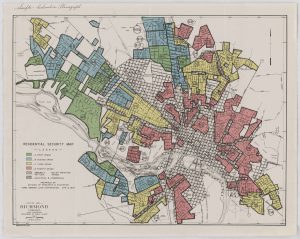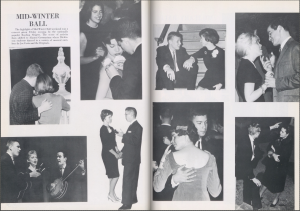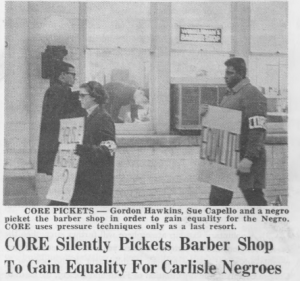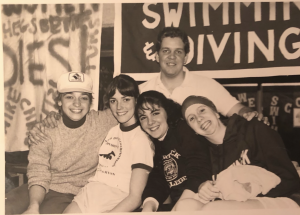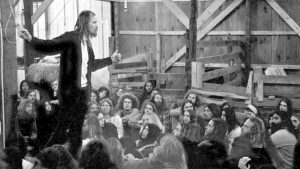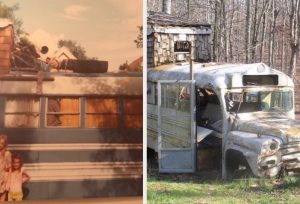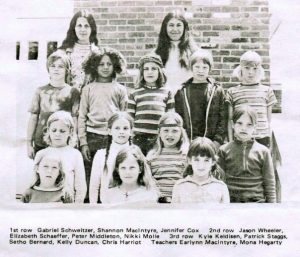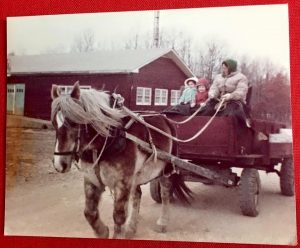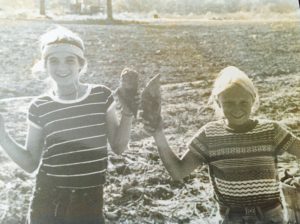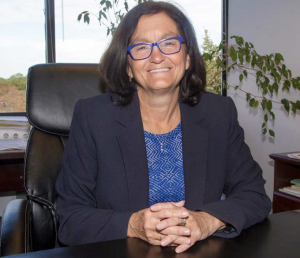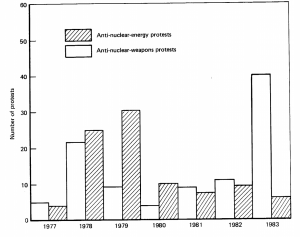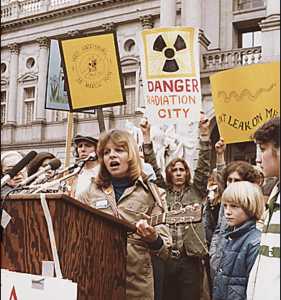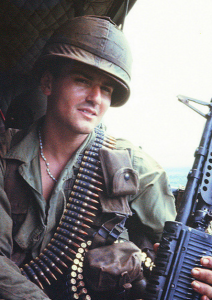On November 4, 1979, amid the chaos of the Iranian revolution, a huge crowd of Iranian militants and students stormed the US embassy in the Iranian capital of Tehran and took 52 American diplomats and citizens hostage. One of those diplomats who was taken hostage was a young political officer by the name of Michael Metrinko. For 444 days, he and the other 51 hostages were held against their will by the Iranian regime, who sought to profit from the hostage takeover by demanding that the United States hand over the exiled Iranian Shah in return for the hostages, something the US President Jimmy Carter refused to do. Finally, on January 20, 1981, after over a year in captivity and a failed rescue attempt by the US, the 52 hostages were released into American hands. Forty years later the incident still casts a large shadow over US-Iranian relations, which continues to be strained.

Militants and students storm the embassy on November 4, 1979.
In order to understand why the revolution occurred, one has to go back to the year 1953. It was at this time that the Iranian government under Iranian prime minister Mohammad Mossadegh was removed from power in a coup orchestrated by the American Central Intelligence Agency (CIA) and the United Kingdom’s M16 (foreign intelligence branch). In Mossadegh’s place, the US helped put back into power Mohammad Reza Pahlavi, the Shah. While the Shah had been on the throne since 1941, his political powers increased considerably after the events of 1953. Under the Pahlavi Dynasty (1926-1979), Iran witnessed huge economic and modernization programs. In one of the most famous efforts to bring about political and economic reform, known as the “White Revolution,” the Shah implemented policies that sought to significantly reduce the powers of major landlords. He also gave women the right to vote in elections, a step that angered the conservative religious clerical establishment.
To his critics, the Shah’s regime was not a modernizing force but a very repressive political model. On the Shah’s watch, thousands of Iranians were arrested, tortured, and sometimes even executed. “I had students who had been in jail because they were opposed to the Shah. I had one student who was executed, wonderful student, after being tortured by the Shah’s secret police”, Michael recalled.
By the late 1970s, dissatisfaction with the Shah’s regime had reached a boiling point. Thousands of Iranians from all walks of life came out to protest against the Iranian monarchy. “There was a lot of demonstrations here and there. Anyone who could not see the revolution coming had to be blind, death, dumb, and incredibly stupid. You could sense it. You could feel it. You could hear about it” Michael stated. In January 1979, after much thought, the Shah, who was sick with cancer, boarded a plane and left Iran for the last time into exile. “It was time for him to go. He didn’t understand that”. Shortly after his departure, a man by the name of Ayatollah Khomeini returned to Iran from exile and became the leader of what was now a full-on revolution.[1]
As the United States had been a major supporter of the Shah’s rule, there was a lot of anti-American sentiment expressed among the Iranian revolutionaries. Outside the US embassy in Tehran, there were often large protests against the US government by Iranian militants and students from the nearby university. On the morning of November 4, 1979, there was what seemed to be another usual protest by militants and students. Then, suddenly, members of the large crowd began to scale the embassy walls and some managed to get the embassy gate open. A sea of people began to storm the main embassy building itself within the compound. “I had gotten there early. I was sitting there doing some paperwork with my back turned to the window. I heard this rumbling noise start. I eventually went to the window to check it out and saw a huge crowd of people storming the gates. That’s when the alarms went off. We just sat there and waited.”[2]
The militants and students quickly took control of the embassy grounds and seized 52 American diplomats and citizens hostages. For over a year the hostages, Michael included, were held in tight conditions. “Spent ten months in solitary confinement. I was routinely beaten. I slept on bare concrete floors a lot of the time. I was often handcuffed. I sat in a room in solitary with a guy sitting ten feet away pointing a gun at me. I was never allowed to write a letter. My parents did not know I was alive until December 1980. Nor did the State Department. One of the guards smuggled a letter out for me” Michael recalled. Many of the hostages were interrogated and beaten. Some were forced into mock executions, where the prisoners were lined up against a wall where they thought they would be killed.[3]
In April 1980, the United States military, with the go ahead from US President Jimmy Carter, launched Operation Eagle Claw, a military attempt at rescuing the hostages from Tehran and returning them to the US. A group of US military helicopters and transport aircraft were sent into the Iranian desert from the USS Nimitz and the USS Coral Sea. Unfortunately, as the operation was underway, the aircraft encountered a large sandstorm that forced the group to land. Upon landing, it was discovered that one of the helicopters had a damaged rotor blade and was subsequently abandoned. To make matters worse, a bus carrying a group of civilians arrived in the area and had to be captured and guarded by members of the US Delta Force team that was part of the operation.[4]
Seeing that the operation seemed to be going nowhere, President Jimmy Carter ordered the team to abort the mission and return back to base. As the aircraft took off, one of the transport planes collided with one of the helicopters, bursting into a massive fireball that ultimately resulted in the deaths of 8 crew members. Operation Eagle Claw had resulted in a total failure and a large propaganda victory for Khomeini, who claimed that God had protected Iran by sending in the sandstorm to stop the US operation. President Carter was forced to take full responsibility for the failed mission, and it greatly hurt his reelection chances in 1980, which were already not that great to begin with thanks to domestic economic troubles.[5]
In September 1980, Iraq under the leadership of Saddam Hussein invaded Iran and soon the two countries were deadlocked into a full-blown war with warfare tactics not seen since the First World War. It was around this time that other countries began putting more and more pressure on Iran to release the hostages. Also, due to the death of the Shah back in July of that year, the Iranians now had little use of the hostages as a bargaining chip. Furthermore, with the war with Iraq raging on, Iran was in desperate need for military supplies. Since Iran had mostly American-made arms and equipment, Iran was forced to go to the US for extra supplies. As a result, Iran and the United States with the assistance of Algeria, began to negotiate for the release of the hostages.[6]
On January 20, 1981, minutes after Ronald Reagan had been inaugurated as President, the hostages were finally released after 444 days in captivity. “Free at last. Felt good. I was glad to be out. I don’t think I had any ill effects. I got into very good physical condition while I was in my cell” Michael stated. Forty-two years later and relations between the United States and the Islamic Republic of Iran continue to be nearly nonexistent as Iran considers the US to be the “Great Satan” and still celebrates the takeover of the US embassy 42 years later. When asked if he regretted anything, Michael simply replied, “Yeah that I didn’t stay home that morning,” as he laughs out loud.
The Iran hostage crisis of 1979-1981 was and continues to be an important historic event. To this day, this major diplomatic incident shapes American public and government opinions of the Islamic Republic of Iran. Maybe one day the two countries can put the bad blood behind them and normalize relations. Until that time, however, the two will remain at odds and seek ways to challenge and undermine the interests of the other.[7]
Interview subject: Michael J. Metrinko, age 75, retired US Political Officer who worked in the US State Department during the late 1970s and was taken hostage during the Iranian Hostage Crisis of 1979
-Audio recording with Michael Metrinko, Carlisle, PA, April 26, 2021
Q. Could you describe your position as a political officer?
A. I had served in the Peace Corps in Iran for three years from 1970 to 1973. I went back in 1977 and it was my third assignment. First in Turkey for two years and then in Syria. I was initially assigned to the visa section in the embassy. Then a few months later I was asked to go up to Tabriz and take over as principle officer at the American consulate in Tabriz. I was in the consulate there until February 1979. Because of conditions and an attack on the consulate in Tabriz I was brought back to Tehran and given an assignment in the political section. I was one of the few people that stayed on from the old staff that had been there prior to the revolution. I stayed on because I could speak Farsi and I had a lot of contacts within the Iranian government. The embassy wanted me to stay on because I was one of the few people that could speak Farsi and so I became one of the new officers in the new political section. Later in 1979 I was in the political section reporting officer responsible for a wide variety of subjects when the event occurred on November 4th 1979 the attack on the embassy, which resulted in the taking of hostages.
Q. Did you sense that a revolution was on the horizon? Why, or why not?
A. Of course. It was obvious to anyone who wasn’t a total idiot. I had students who had been in jail because they were opposed to the Shah. I had one student who was executed, wonderful student, after being tortured by the Shah’s secret police. All I ever heard from Iranian friends was their dissatisfaction with the Shah’s government. When I went back in 1977 I was getting this all the time. It was talked about quite openly by a lot of Iranians. There was a lot of demonstrations here and there. Anyone who could not see the revolution coming had to be blind, death, dumb, and incredibly stupid. You could sense it. You could feel it. You could hear about it.
Q. What did you think of the Shah, as a man and as a ruler?
A. I have a prejudice against dictators. I have a prejudice against people who think that God himself has bestowed a kingdom upon them and ignore the laws and ignore morality and rule it as if it is a family business. He was a fairly weak ruler. He’s family was fairly corrupt. He was basically incapable to have the ability to rule. He had been there since the 1940s. It was time for him to go. He didn’t understand that. Maybe a nice guy to his family. Shallow, vain, thought he was great when he wasn’t.
Q. How did you feel about the revolution of 1979?
A. It was necessary because the Shah wasn’t going to leave otherwise and his system wasn’t going to change otherwise. Initially it gave promise. Almost immediately it started breaking its promises.
Q. How did you end up at the embassy that morning?
A. My standard work day was I would be out every night. I had a vast network of friends. I was out almost every night with Iranian friends. There was martial law so often I would not come back until early in the morning. That meant that I could not get to the embassy at 8 o’clock in the morning to start work because I had gotten back home at maybe 5, 6 in the morning. The day before all this I had a call from a good friend. He said that he had to talk to me the next day around 10 o’clock or so. I said I couldn’t do it. He said his brother and him were going to leave Tehran and meet with Yasser Arafat. I said sure I’ll be there. They never showed up.
Q. Could you describe the morning of the takeover?
A. I had gotten there early. I was sitting there doing some paper work with my back turned to the window. I heard this rumbling noise start. I eventually went to the window to check it out and saw a huge crowd of people storming the gates. Thats when the alarms went off. We just sat there and waited.
Q. Were you surprised when they stormed the embassy?
A. No. I was highly annoyed. What surprised everyone was how long it was going to take. We thought that even if we were attacked it would be over in a few hours and then we could go back to some degree of normalcy.
Q. How did you feel when you were taken hostage?
A. Pissed. Royally pissed. Annoyed because it messed up the rest of my day. As it gradually sank in that this would not be over anytime soon I became more and more angry. I could not feel outraged, however.
Q. Could you describe your captors?
A. Combination of bad educations. They knew very little about the real world outside of Iran. Many of them were not students. Some had actually studied in America. They were aided and abetted by people around Khomeini.
Q. How were you treated as a hostage?
A. Spent ten months in solitary confinement. I was routinely beaten. I slept on bare concrete floors a lot of the time. I was often handcuffed. I sat in a room in solitary with a guy sitting ten feet away pointing a gun at me. I was never allowed to write a letter. My parents did not know I was alive until December 1980. Nor did the State Department. One of the guards smuggled a letter out for me.
Q. Did you think you would be rescued by the US?
A. I never thought I would be. You know when I was going through Junior officer training. During orientation we had a long lecture. A guy told us that if we were kidnapped while you are a diplomat they would not pay a ransom. It was an effective policy.
Q. How did you feel once you were finally freed on Jan 20, 1981?
A. Free at last. Felt good. I was glad to be out. I don’t think I had any ill effects. I got into very good physical condition while I was in my cell.
Q. When you look back at this event is there anything that you regret?
A. Yeah that I didn’t stay home that morning hahaha.
Q. Do you think that the Iranian revolutionaries intended to drag this event to 444 days?
A. No. They continued to use this to stay in power.
Bibliography
- Nuechterlein, Donald E. “Iran Hostage Crisis: The Changing Mood in America.” In A Cold War Odyssey, 167-94. Lexington, Kentucky: University Press of Kentucky, 1997. http://www.jstor.org.envoy.dickinson.edu:2048/stable/j.ctt130hzr1.12.
- Smith, Steve. “Groupthink and the Hostage Rescue Mission.” British Journal of Political Science 15, no. 1 (1985): 117-23. http://www.jstor.org.envoy.dickinson.edu:2048/stable/193750.
- McDermott, Rose. “Prospect Theory in International Relations: The Iranian Hostage Rescue Mission.” Political Psychology 13, no. 2 (1992): 237-63. doi:10.2307/3791680.
- Smith, Steve. “Policy Preferences and Bureaucratic Position: The Case of the American Hostage Rescue Mission.” International Affairs (Royal Institute of International Affairs 1944-) 61, no. 1 (1984): 9-25. doi:10.2307/2619777.
- FARBER, DAVID. “444 DAYS.” In Taken Hostage: The Iran Hostage Crisis and America’s First Encounter with Radical Islam, 137-80. PRINCETON; OXFORD: Princeton University Press, 2005. http://www.jstor.org.envoy.dickinson.edu:2048/stable/j.ctt7sts9.9.
- FARBER, DAVID. “TAKEOVER IN TEHRAN.” In Taken Hostage: The Iran Hostage Crisis and America’s First Encounter with Radical Islam, 73-101. PRINCETON; OXFORD: Princeton University Press, 2005. http://www.jstor.org.envoy.dickinson.edu:2048/stable/j.ctt7sts9.7.
- Schachter, Oscar. “SELF-HELP IN INTERNATIONAL LAW: U.S. Action in the Iranian Hostages Crisis.” Journal of International Affairs 37, no. 2 (1984): 231-46. http://www.jstor.org.envoy.dickinson.edu:2048/stable/24356927.
[1] FARBER, DAVID. “TAKEOVER IN TEHRAN.” In Taken Hostage: The Iran Hostage Crisis and America’s First Encounter with Radical Islam, 73-101. PRINCETON; OXFORD: Princeton University Press, 2005. http://www.jstor.org.envoy.dickinson.edu:2048/stable/j.ctt7sts9.7.
[2] FARBER, DAVID. “444 DAYS.” In Taken Hostage: The Iran Hostage Crisis and America’s First Encounter with Radical Islam, 137-80. PRINCETON; OXFORD: Princeton University Press, 2005. http://www.jstor.org.envoy.dickinson.edu:2048/stable/j.ctt7sts9.9.
[3] Smith, Steve. “Policy Preferences and Bureaucratic Position: The Case of the American Hostage Rescue Mission.” International Affairs (Royal Institute of International Affairs 1944-) 61, no. 1 (1984): 9-25. doi:10.2307/2619777.
[4] McDermott, Rose. “Prospect Theory in International Relations: The Iranian Hostage Rescue Mission.” Political Psychology 13, no. 2 (1992): 237-63. doi:10.2307/3791680.
[5] Smith, Steve. “Groupthink and the Hostage Rescue Mission.” British Journal of Political Science 15, no. 1 (1985): 117-23. http://www.jstor.org.envoy.dickinson.edu:2048/stable/193750.
[6] Nuechterlein, Donald E. “Iran Hostage Crisis: The Changing Mood in America.” In A Cold War Odyssey, 167-94. Lexington, Kentucky: University Press of Kentucky, 1997. http://www.jstor.org.envoy.dickinson.edu:2048/stable/j.ctt130hzr1.12.
[7] Schachter, Oscar. “SELF-HELP IN INTERNATIONAL LAW: U.S. Action in the Iranian Hostages Crisis.” Journal of International Affairs 37, no. 2 (1984): 231-46. http://www.jstor.org.envoy.dickinson.edu:2048/stable/24356927.


